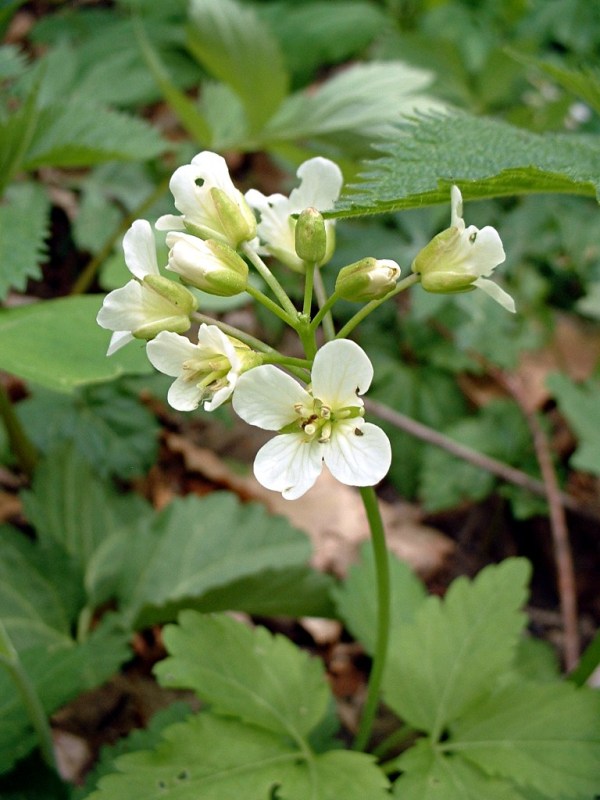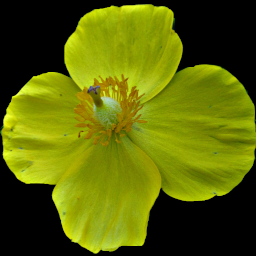
Not as common around here as its close relative the Cutleaf Toothwort (Cardamine concatenata), this plant grows on the same wooded hillsides, especially in stream valleys. It’s easily distinguished by its two leaves with three broad leaflets each (C. concatenata has three leaves with very narrow lobes). This plant was blooming in early May near the Trillium Trail in Fox Chapel.
Gray lists this as Dentaria diphylla. He describes the genus and the species thus:
DENTARIA [Tourn.] L. TOOTHWORT. PEPPER-ROOT
Pod lanceolate, flat. Style elongated. Seeds in one row, wingless, the funiculus broad and flat. Cotyledons petioled, thick, very unequal, their margins somewhat infolding each other. —Perennials, of damp woodlands, with long fleshy sometimes interrupted scaly or toothed rootstocks, of a pleasant pungent taste; steins leafless below, bearing 2 or 3 petioled compound leaves about or above the middle, and terminated by a corymb or short raceme of large white or purple flowers. (Name from dens, a tooth.)
D. diphylla Michx. Rootstock long and continuous, often branched, the annual segments slightly or not at all tapering at the ends; stems in anthesis 1.5-3 dm. high, stoutish; leaves 3-foliolate, the basal and cauline similar, the latter 2 (rarely 3), opposite or subopposite, leaflets 4-10 cm. long, short-petiolulate, rhombic-ovate or oblong-ovate, coarsely crenate, the teeth bluntly mucronate; flowers white; sepals 5-8 mm. long, half the length of the petals; pods rarely maturing. Rich woods and thickets, e. Que. to s. Ont. and Minn., s. to S.C. and Ky. Apr., May. Rootstocks 2-3 dm. long, crisp, tasting like Water Cress.

2 responses to “Broadleaf Toothwort (Cardamine diphylla)”
[…] of three, and they are narrow and deeply divided, with jagged teeth on each lobe. The flowers of Broadleaf Toothwort (Cardamine diphylla) are similar, but the leaves are very […]
[…] are distinctive and easily set this plant apart from other members of the same group, such as the Broadleaf Toothwort and Spring […]